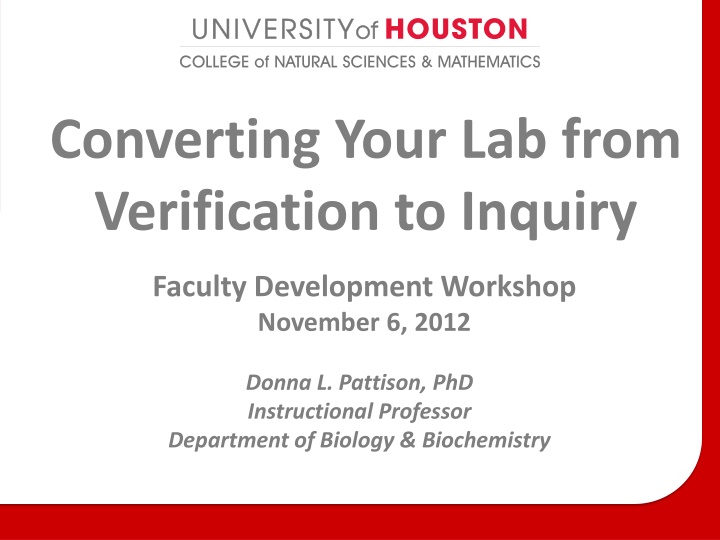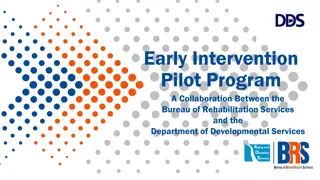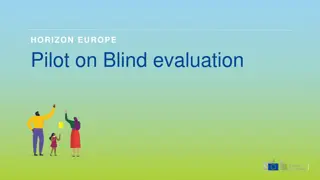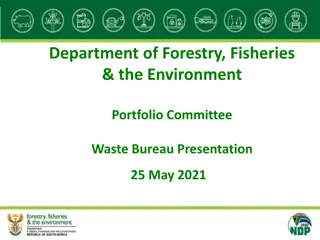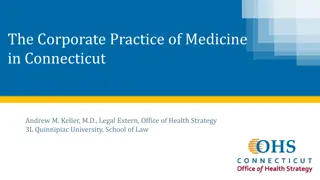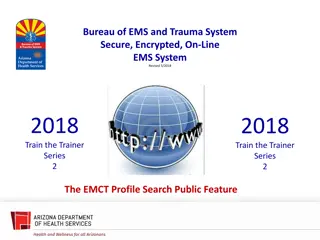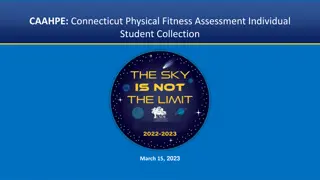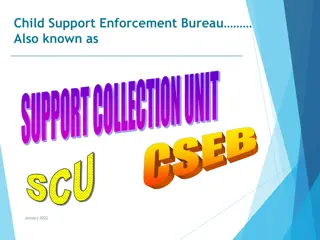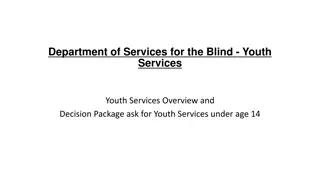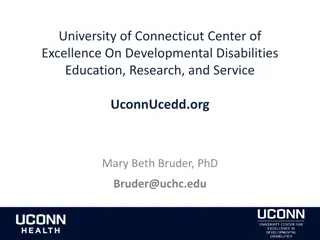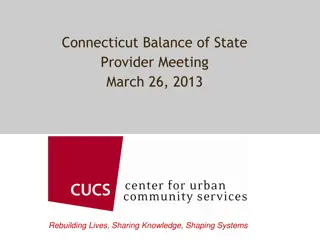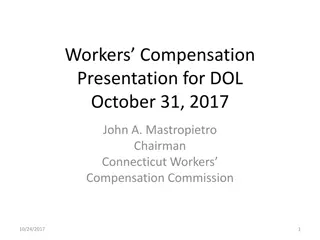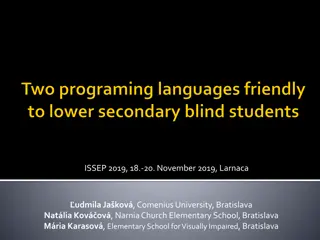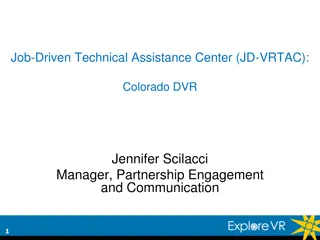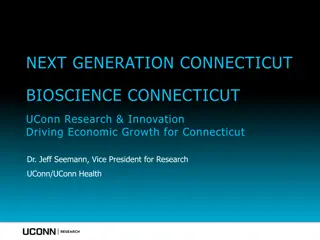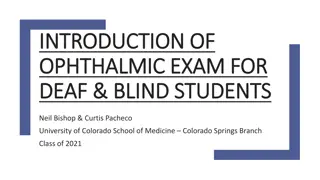Bureau of Education & Services for the Blind's JD VRTAC Project in Connecticut
The Bureau of Education & Services for the Blind in Connecticut has embarked on the JD VRTAC Project to enhance client employment outcomes by utilizing Labor Market Information (LMI) to guide vocational rehabilitation efforts. The initiative aims to address client career goals, improve skills in business engagement and employer support, and align services with the requirements of the Workforce Innovation and Opportunity Act (WIOA).
Download Presentation

Please find below an Image/Link to download the presentation.
The content on the website is provided AS IS for your information and personal use only. It may not be sold, licensed, or shared on other websites without obtaining consent from the author.If you encounter any issues during the download, it is possible that the publisher has removed the file from their server.
You are allowed to download the files provided on this website for personal or commercial use, subject to the condition that they are used lawfully. All files are the property of their respective owners.
The content on the website is provided AS IS for your information and personal use only. It may not be sold, licensed, or shared on other websites without obtaining consent from the author.
E N D
Presentation Transcript
Converting Your Lab from Verification to Inquiry Faculty Development Workshop November 6, 2012 Donna L. Pattison, PhD Instructional Professor Department of Biology & Biochemistry
Cookbook Lab Guided Inquiry Open Inquiry Purpose: Advantages: Disadvantages:
Does it Work? Luckie et al (2004): 78% of comments from students in inquiry-based labs were positive vs 20% in traditional labs Myers and Burgess (2003): Students completing inquiry- based labs critiques and designed experiments better then those who did not Suits (2004) found SEM majors taught chemistry via inquiry scored higher in tests evaluating their ability to design, conduct, interpret, and report results for experiments Handbook of College Science Teaching (2006) NSTA Press. Chapter 21: Converting Your Lab from Verification to Inquiry by French and Russell
Things to Consider: 1) Building student lab skills and enthusiasm prior to implementation 2) Guiding students through the process 3) Resources and space 4) Time management 5) Evaluation 6) TA Training
The Project Flow Guided Exercises Independent Inquiry
Generating Enthusiasm for the Project Make it a competition
Guiding Students Through the Research Process I. Generate an idea to pursue a. Provide a few examples b. Homework: Generate ideas (3 possible research ideas per student) c. Small group discussion (professor, TA, lab group); chose 1 or 2 ideas to pursue II. Write a research protocol a. Team homework b. Protocol reviewed by professor and TA; returned with comments III. Open lab time: Supervision is the key! a. Regularly scheduled lab time cancelled b. Lab staffed by the teaching TAs during their regular class times c. Lab staffed by prep TAs during their regular hours d. Professor in lab as much as possible e. Previous undergraduates when possible
Resources and Space Space: Stake out territories (tape); pre-marking spaces eliminates territorial arguments Resources: 1) Clearly define limits on product use (example: each group gets 6 mls of protein ONLY). 2) Supervise any reagent mixing. Check calculations. 3) Limit projects to those that can be done with items students supply or common supplies stocked routinely in the lab. 4) Be sure supplies are well-stocked ahead of time.
Time Management 1) Limit the duration of the project. Help students chose projects that can reasonably be completed in the given block of time. 2) Remind students there are many of them and not so many instructors. 3) Help the students with time management a) Keep your expectations and theirs reasonable b) Remind them (and remember) they have other classes c) Review the time schedule for their project with them when reviewing their protocols
Evaluation 1) Student evaluation is rubric based 2) Includes points for creativity and effort a) Team feedback on the productivity of group members (filled out outside of class) b) If you ve spent much time in the lab, you often know which groups put a lot of effort in and which did the minimum before they present
